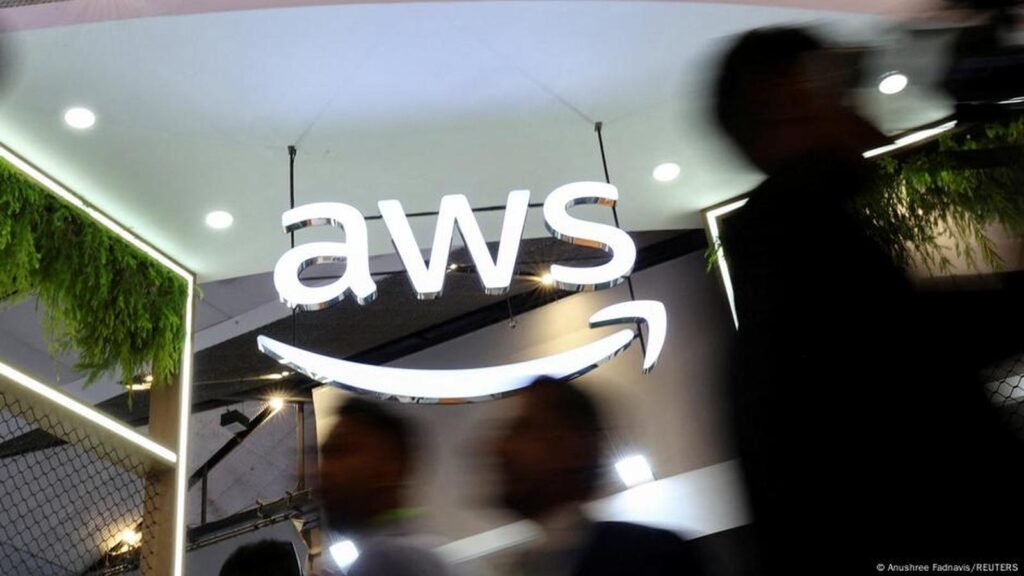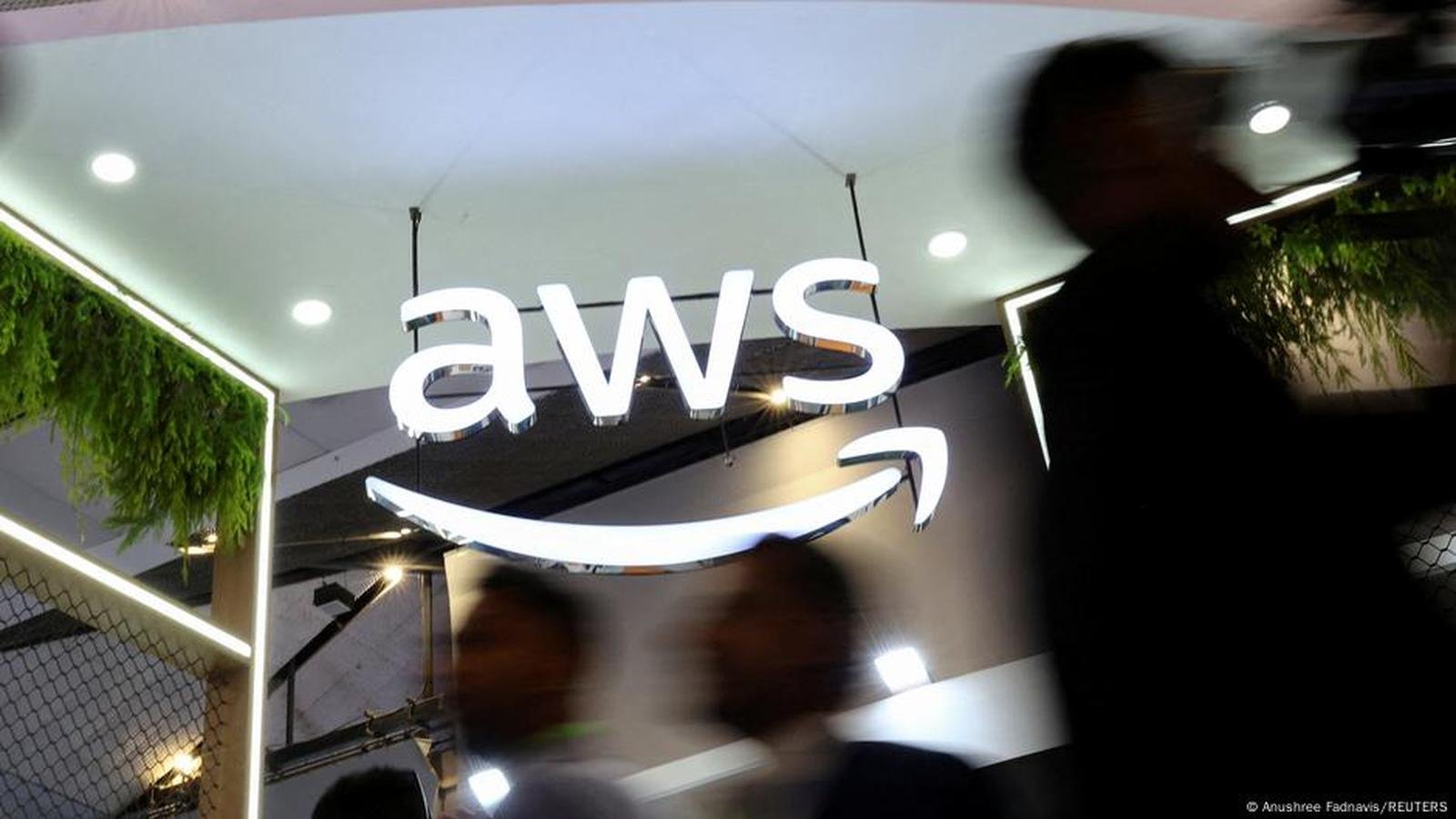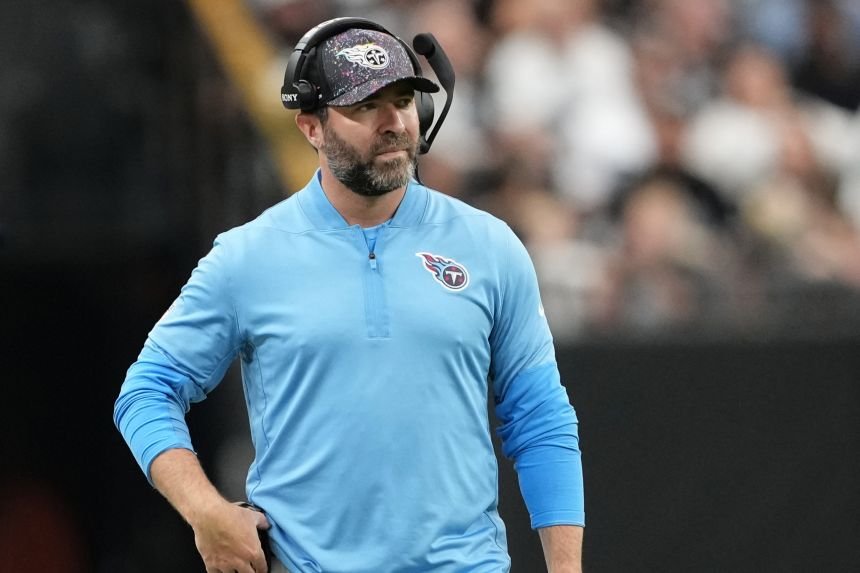A massive Amazon Web Services outage is disrupting websites and apps globally today, affecting major services like Snapchat, Venmo, Canvas, and more, as Amazon works to restore its cloud infrastructure.
Introduction
A major AWS outage is rippling across the internet today, knocking offline a host of popular apps and websites used by millions worldwide. Amazon Web Services (AWS) – the backbone for much of the web’s infrastructure – began experiencing problems in the early hours, leading to widespread disruptions on platforms ranging from social media and gaming to online banking. Users of services like Snapchat, Reddit, Venmo, and even Amazon’s own Alexa voice assistant woke up to errors and connectivity failures, as the cloud giant’s issues cascaded through the online ecosystem techradar.comwashingtonpost.com. The incident underscores how one cloud provider’s troubles can bring a sizable portion of the digital world to a standstill washingtonpost.com.
Cause of Outage and Regions Affected
What caused the AWS outage? Early on, confusion and speculation swirled. Some observers wondered if a server hardware failure or even a cyberattack was to blame for the sudden collapse of so many services. However, Amazon quickly dispelled the hacking theories – the company pointed to an internal technical glitch as the culprit. In an update on its status dashboard, AWS attributed the disruption to an “underlying DNS issue” in its network washingtonpost.com. DNS, which stands for Domain Name System, is essentially the internet’s address book that translates readable website names into the numeric IP addresses servers use. When DNS breaks, services can’t locate each other’s servers – “thousands of systems can’t find the right server… and eventually just stop trying,” explained one cybersecurity expert of the outage’s cascading effect washingtonpost.com. In this case, AWS’s internal DNS malfunction meant that many requests simply couldn’t reach the proper servers, causing apps to fail even if they were otherwise functional.
Amazon’s cloud status page further revealed the issue originated in its US-EAST-1 data center in Northern Virginia, one of AWS’s largest and most critical server farms techradar.com. Notably, this same region has suffered high-profile outages in the past (including incidents in 2020 and 2021) reuters.com, making it a single point whose failure can send shockwaves through the internet. The impact wasn’t confined to Virginia or the United States, though. Because countless global services rely on AWS’s infrastructure, the outage quickly spread worldwide, affecting users across North America, Europe, Asia and beyond washingtonpost.com. Initial reports of trouble appeared around 2:40 a.m. Eastern Time, and by morning rush hour in Europe, many international users also faced slow or unreachable sites techradar.com. In other words, regions far from the source data center still felt the pain – a testament to how interwoven AWS is with internet operations around the globe.
AWS officials stressed that the incident was not due to any external attack. Instead, it appears to stem from an internal fault in AWS’s networking systems – possibly a failure in a subsystem that monitors network load balancers, which then cascaded into DNS and connectivity problems theverge.comreuters.com. As a precaution, engineers even throttled some AWS functionality (like launching new server instances) while working on fixes theverge.com. By isolating the problem and applying DNS mitigations, Amazon said it began to stabilize the situation. Still, the outage’s broad footprint – centered on one region but felt globally – highlights the fragility of the internet’s current architecture, where so many services funnel through a handful of cloud providers washingtonpost.com.
Major Apps and Services Knocked Offline
Many popular platforms dependent on AWS went down or experienced major outages during the incident. Here’s a breakdown of the major services impacted:
- Snapchat: The photo messaging app was one of the hardest-hit platforms. Users reported being unable to send snaps or even log in. At one point, Downdetector showed over 22,000 problem reports for Snapchat in the U.S. (and 7,000+ in the UK) in the early hours techradar.com. Some received error messages about “temporarily disabled” access after repeated failed attempts. While Snapchat’s service has fluctuated throughout the day – coming back for some users only to go down again – it remains unstable, and the company has not issued a full statement yet techradar.com.
- Venmo: The popular peer-to-peer payment app (owned by PayPal) went dark, leaving many users unable to send or receive money. Reports of Venmo issues spiked sharply alongside other services, and the outage hit just days after Venmo experienced a separate downtime incident techradar.com. Venmo’s support account on X (Twitter) has been responding to frustrated customers, simply directing them to the support website for now techradar.com. The disruption has been a major inconvenience for those trying to make payments or transfer funds during the outage.
- Canvas (Instructure): The widely used online learning platform Canvas suffered a major outage that affected students and educators across K-12 schools and universities. Thousands of users struggled to access assignments or submit coursework on Monday. Canvas confirmed on its own status page that the problem was tied to “an ongoing AWS incident,” even displaying a tongue-in-cheek broken rocket ship graphic to acknowledge the failure newsweek.com. The outage for Canvas initially spiked before dawn and again around mid-morning as the AWS issues persisted techradar.com. As of midday, Canvas engineers reported they were “still working to resolve the ongoing outage” and had no ETA for a full fix techradar.com.
- Reddit: The massive discussion forum and so-called “front page of the internet” went partially offline as a result of the AWS problems. Many Reddit users found that the site wouldn’t load at all, or that the mobile app was throwing odd errors and rate-limit messages (likely because the app kept trying – and failing – to reach Reddit’s servers) techradar.comtechradar.com. Outage reports for Reddit peaked at around 12,000 just after 6 a.m. ET during the height of the disruption techradar.com. By late morning, Reddit’s tech team implemented a fix and the platform began recovering techradar.com. The Reddit Status account on X confirmed that a solution was in place and they were monitoring results techradar.com.
- Amazon Alexa: Amazon’s own voice assistant service was knocked offline, illustrating how the company wasn’t spared by its cloud troubles. Users with Alexa-enabled devices (Echo speakers, etc.) reported that Alexa would not respond to queries or execute routines during the outage theverge.com. Some woke up to find their morning alarms silent or smart-home commands failing – Alexa simply couldn’t connect to the cloud to process requests. This outage not only frustrated consumers but also highlighted the dependence of smart home functions on internet connectivity. (Amazon’s smart home division acknowledged the issues as part of the broader AWS outage.)
- Ring: Another Amazon-owned service, Ring security cameras and doorbells, also went down. Many Ring customers found their camera feeds unavailable and could not receive motion alerts, essentially blinding their security systems newsweek.com. Downdetector logged thousands of Ring outage reports in both the U.S. and UK, especially shortly after Reddit’s recovery when Ring problems spiked again techradar.com. At 11:37 a.m. ET, Ring’s official account on X publicly acknowledged the service interruption and said the team was working to resolve it newsweek.com. By early afternoon, basic Ring functions were returning for most users, though some features remained glitchy.
- Fortnite: Gamers weren’t immune to the outage. Epic Games’ hugely popular battle royale Fortnite relies on AWS for its online infrastructure, and the game went offline for many players. Matchmaking and game services failed during the outage, preventing users from logging in or playing. Epic Games was among the first to alert its community – posting on social media that they were aware Fortnite was down due to the AWS outage. Fortunately, Fortnite was also one of the earlier services to recover once AWS began stabilizing; Epic reported that Fortnite and its related Epic Games Store had come back online by later in the morning U.S. time theverge.com.
- Roblox: The popular user-created gaming platform Roblox also saw major disruptions. With millions of mostly younger players, Roblox’s downtime led to a flood of complaints from kids and parents alike. Users couldn’t load games or encountered connection errors. According to outage trackers, Roblox service began stabilizing after a few hours once AWS implemented fixes reuters.com. By midday, Roblox announced that it had largely restored service, though a few lingering issues were still being ironed out. Like many other companies, Roblox pointed the finger at AWS as the root cause.
These are just a few of the headline names. Dozens of other services were impacted as well – from communication tools like Slack and Zoom, to entertainment platforms like Disney+ and Hulu, to smart home products and even bank systems. In the UK, banking apps for major banks saw error spikes, and in the U.S., airline booking systems and IoT gadget services reported problems techradar.com. The broad sweep of affected platforms drove home the same lesson: if it runs on AWS, it’s vulnerable when AWS hiccups.
Users React on X, TikTok, and Reddit as #AWSDown Trends
As the outage unfolded, users worldwide flocked to social media to vent their frustration and seek answers. On X (formerly Twitter), the hashtag #AWSDown shot to the top of trending topics Monday morning. Thousands of people tweeted that their favorite apps were not working – often not realizing at first that AWS was the common thread. Many posts were humorous or sarcastic; for example, some joked about taking a “day off the internet” or shared memes of cartoon characters frantically trying to fix a broken server. Others simply expressed confusion (“Is Snapchat down for everyone or just me?!” became a common refrain). The volume of complaints was backed up by data: at one point, Downdetector recorded roughly 50,000 combined outage reports across various services, all kicking off around the same time when AWS faltered tomsguide.com.
Official channels on social media also chimed in. Corporate support accounts for apps like Snapchat, Roblox, and Signal confirmed on X that they were experiencing issues due to the AWS problems fox35orlando.com. These acknowledgments gave users some reassurance that the chaos was being addressed, although replies were filled with impatience for updates. Meanwhile, the hashtag #InternetOutage also trended, as people noted the broader scope of the event – this wasn’t just one website down, but a significant chunk of the internet’s services going dark simultaneously.
Over on TikTok, users posted tongue-in-cheek videos about the outage. Some acted out comedic skits of what life is like when social apps are down (“me checking my WiFi router for the 10th time thinking the problem is on my end”), while others offered quick explainers about AWS for those wondering why apps as different as a banking service and a video game could crash at the same time. These TikTok clips garnered thousands of views and shares, turning the outage into a trending topic in its own right on the platform.
The discussion also spilled onto Reddit, where tech-savvy users congregated to swap information. Ironically, Reddit itself suffered intermittent outages during the height of the incident, which temporarily stifled some real-time discussions. Still, subreddits dedicated to tech news and cloud computing were filled with threads analyzing the outage. Users shared screenshots from AWS’s status page and Downdetector graphs, and some Amazon employees (unverified) even chimed in with purported insider commentary. Once Reddit’s service was restored, these threads grew rapidly as people recapped the morning’s turmoil and trade theories about AWS’s resiliency. In one popular post, a Redditor quipped, “AWS is basically down – guess it really is the day the internet broke,” capturing the incredulity of seeing so many everyday apps offline at once.
Throughout social media, one common sentiment emerged: a mix of frustration and dark humor. For everyday users, the AWS outage was a reminder of how much we rely on a handful of cloud providers for our digital lives. The memes and hashtags provided a bit of comic relief in a situation where there was little to do but wait for Amazon’s engineers to fix the problem. And in a sign of the times, even downtime turns into content – with outage-related hashtags and jokes trending across platforms.
Market Impact: Amazon’s Stock Sees Jitters
A disruption of this magnitude doesn’t just affect consumers and app developers – investors were watching closely as well. Amazon’s stock (NASDAQ: AMZN) reacted in real time to the outage news. In pre-market trading on Monday, as reports spread that AWS was down, Amazon’s share price took a dip. The prospect of a prolonged cloud outage raised concerns about immediate revenue losses and potential damage to Amazon’s reputation in cloud services, which is a major profit driver for the company. However, once markets opened and as signs emerged that AWS was implementing fixes, the stock began to stabilize. By late morning, AMZN had actually bounced back from its lows and was trading about 0.5–1% higher than the opening price investopedia.com. This recovery suggested that investors viewed the incident as a temporary blip rather than a long-term crisis.
Still, the market volatility around Amazon highlighted how significant AWS is to the company’s valuation. Roughly a third of Amazon’s operating income comes from AWS, and countless enterprise clients depend on it, so any hint of instability can rattle shareholder confidence. Analysts noted that early trading swings were a direct reaction to AWS’s status updates: when Amazon announced the root cause was identified and mitigation was underway, the stock ticked upward. Had the outage dragged on with no clear fix, the stock could have continued to slide. By the closing bell, Amazon’s stock had largely shrugged off the day’s drama, ending only modestly lower than the previous day (investors may have been factoring in some minor revenue hit for the hours of downtime). Overall, the episode served as a reminder to the market that even tech giants are not immune to infrastructure hiccups – but also demonstrated Amazon’s ability to address issues fairly swiftly.
Other tech stocks saw minimal impact, though companies heavily reliant on AWS (for example, certain SaaS providers or streaming firms) experienced small intraday dips as their own outages unfolded. The broader stock indices remained stable, indicating this was seen as a contained event. However, industry observers predict Amazon might face tough questions from enterprise clients and shareholders about what measures it will take to prevent future outages of this scale. If nothing else, Monday’s outage put a spotlight on cloud reliability – a topic likely to feature in upcoming earnings calls and IT planning sessions for major AWS customers.
Amazon Web Services’ Response and Next Steps
As of the latest updates, Amazon Web Services has begun restoring the affected systems, though not without some hiccups on the road to recovery. Amazon’s official status dashboard reported that by 6:35 a.m. ET, the company had “fully mitigated” the underlying DNS issue and that most AWS services were starting to operate normally again washingtonpost.com. Indeed, many apps dependent on AWS began coming back online in the ensuing hours. However, AWS soon acknowledged that the fix was only partial – residual problems persisted as the immense backlog of queued requests and stuck processes was being cleared washingtonpost.com. By mid-day, AWS engineers were still working to resolve lingering “elevated error rates” affecting certain services, meaning some users would continue to see errors until the recovery was fully complete techradar.com.
Amazon communicated sparingly but steadily throughout the incident. The AWS Service Health Dashboard provided technical play-by-play for cloud customers, noting, for example, that the issue originated in the EC2 (Elastic Compute Cloud) internal network and affected how network load balancers were health-checking (which in turn caused the DNS knock-on effect) reuters.com. In plainer terms posted on Amazon’s official channels, the company apologized for the inconvenience and reassured users that there was no security breach, just a very stubborn infrastructure bug. Midway through the day, Amazon released a brief statement via its news blog and social media saying “some customers still continue to experience increased error rates with AWS services” even after the main issue was addressed techradar.com. In the typically understated tone of a status report, this meant that a number of apps were still not fully functional. Amazon added that it was “working towards full recovery” and would provide updates when all systems are back to normal.
For users and businesses, the pressing question is “What happens next?” In the short term, AWS will continue flushing through the backlog of service requests and verifying that every dependent system (databases, server instances, DNS resolvers, etc.) is synchronized and healthy. This process can take hours even after the root problem is fixed, as evidenced by some apps going up and down in waves today. Amazon has advised patience as systems stabilize, and some companies like Canvas and Ring have cautioned their users that functionality may be intermittent until AWS is fully restored.
In the slightly longer term, Amazon will undoubtedly conduct a post-mortem analysis of the outage. Customers and stakeholders will expect a detailed explanation for how a DNS issue in one region managed to have such extensive fallout, and what proactive steps AWS will take to bolster its resilience. Often after incidents like this, AWS might roll out new safeguards or adjustments (for example, improvements to internal DNS redundancy or better isolation of regional systems) to prevent a repeat scenario. Given the high-profile nature of this outage – splashed across global news – Amazon’s cloud division will be under pressure to prove that it has learned from the failure.
Fortunately, as Monday progresses, the trend has been toward recovery. By late afternoon, most major services were back online or on the mend, according to AWS’s dashboard and company statements. Users are gradually regaining access to their apps, and Amazon has said it will update its status page when all remaining issues (even minor ones) are resolved. While the outage was severe, it appears to be ending with more of a whimper than a bang – not with a protracted multi-day downtime, but rather a few intense hours of disruption that teams will be dissecting for weeks to come.
Official Sources and Updates
For those looking to monitor the situation or seek more information, here are official resources and channels related to this AWS outage:
- AWS Service Health Dashboard – The official AWS status page provides real-time updates on any service issues techradar.com. Amazon posts announcements here regarding the outage’s progress, root cause, and resolution steps. (Link: AWS Health Dashboard on Amazon’s website.)
- DownDetector Outage Tracker – A public site that aggregates user reports of outages. It showed the spike in problems for AWS and various apps today techradar.com, and is a useful tool to see if others are experiencing similar issues in real time.
- Amazon & AWS Official Social Media – Amazon Web Services’ official X (Twitter) account and Amazon’s other social channels often share statements or acknowledgments during major incidents. Companies affected by the outage (like Snapchat, Ring, and Fortnite) also posted updates on X about their service status in relation to the AWS problems fox35orlando.com. Checking these official accounts can give the latest on recovery times and any advice for users.
- AWS News Blog and Support Forums – In the aftermath, AWS may publish a summary or detailed analysis on their news blog (on AboutAmazon.com or AWS’s newsroom). AWS Support forums and AWS’s Reddit community can also be sources of insight, where AWS staff or community experts might answer questions once the dust settles.
Users and administrators should keep an eye on these official sources for the most up-to-date information on the outage resolution. With Amazon’s teams working to fully restore services, any new developments or all-clear notifications will likely be communicated through the above channels. Stay tuned there for confirmation that AWS – and the many apps it underpins – are wholly back to normal. In the meantime, Monday’s global outage will be remembered as a wake-up call about the internet’s dependencies, and a case study in why even cloud titans need fail-safes for their fail-safes.







